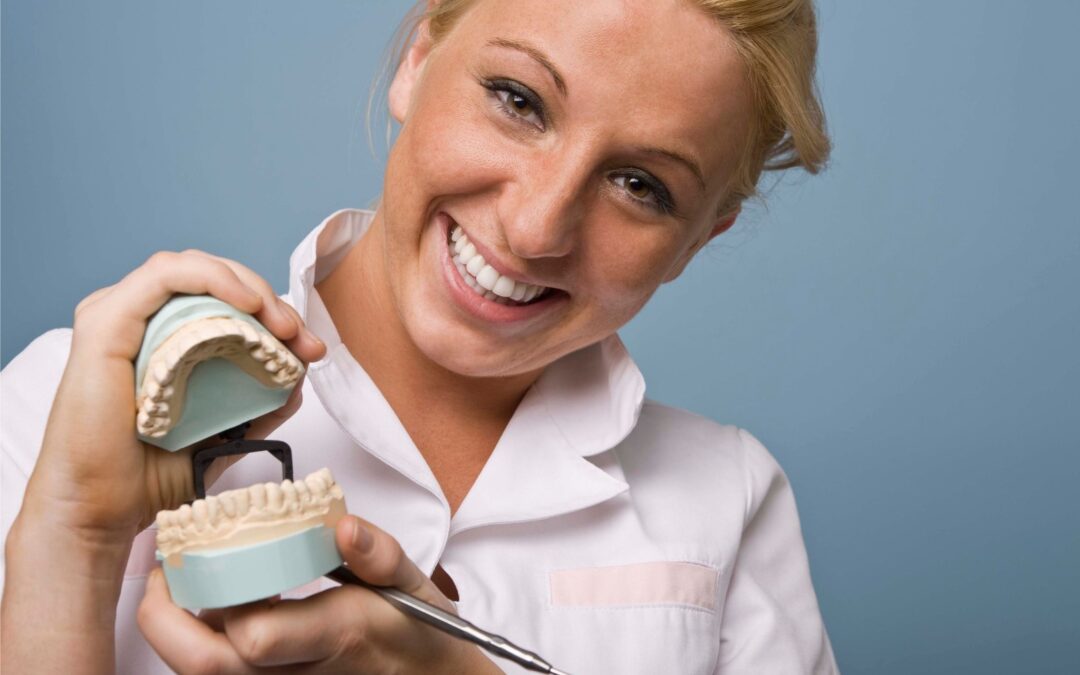The alignment of your upper teeth with your lower teeth impacts your appearance and your overall health. If your teeth are not misaligned, you may have difficulties with vital functions like chewing and speaking. Malocclusions or misaligned bites can also cause teeth to wear away or become crooked over time.
Overbites and underbites are the two most common types of malocclusions, and many people experience them to some degree. If you want to determine whether or not you have this dental problem, we’ll delve into the answers.
In the following sections, we talk about the difference between overbite and underbite, how to know if you have it and what treatment options you can seek.
What Is An Overbite?
The typical bite has a small overbite, where the upper front teeth slightly overlap the teeth at the bottom. However, when the upper row overlaps the lower by more than 2-3 mm, the misalignment is considered an excessive overbite. This condition is common for those with a smaller lower jaw or a lower jaw that’s shorter than the upper jaw.
How To Identify An Overbite?
There’s no secret trick on how to identify overbite, and you can do it by looking at your teeth in the mirror. With an overbite, you’ll see that your upper teeth partially or entirely cover your bottom teeth. And if you have an extreme case of malocclusion, you may even feel your bottom teeth touching and irritating the roof of your mouth.
What Happens If You Don’t Fix an Overbite?
If you believe that you or your child has an overbite, it’s best to see your dentist or orthodontist as soon as possible.
In some cases, if left untreated, the misaligned bite can lead to:
- Alignment issues, especially if the lower teeth grow towards the top row and crowd them.
- Accelerated wear and tear for the lower front teeth.
- Painful sores, especially if the lower front teeth hit the roof of the mouth.
- Difficulty in chewing food and speaking.
What Is An Underbite?
With an underbite, the lower teeth jut past the upper front teeth. The condition occurs because of the underdevelopment of the upper jaw, excessive growth of the lower jaw, or both.
This type of malocclusion is a common aesthetic problem among dental patients, but that’s not all. This type of malocclusion can also cause tooth wear and speech and articulation difficulties.
How To Identify Underbite?
Just like in identifying overbites, all you have to do is stand in front of a mirror and close your teeth. If the lower front row extends out in front of the upper row, you have an underbite. Your lower jaw or chin may also appear more prominent or longer with this malocclusion.
What Happens If You Don’t Fix an Underbite?
Without proper treatment, an underbite can make it hard to chew your food and clean your teeth properly. It can also increase your risks of getting tooth decay or gum disease and put stress on your teeth, jaws and muscles. Ultimately, having a protruding jaw due to an underbite can also make you feel conscious about your appearance, impacting your self-esteem.
Underbite vs. Overbite: What’s the Difference?
The difference between overbite and underbite can be easily seen. An overbite involves the upper teeth extending beyond and in front of the lower teeth, while an underbite is the exact opposite. With an underbite, the lower teeth extend outward, going farther than those at the upper front.
Despite this key difference between overbite and underbite, both must be corrected through the supervision of a licensed and experienced orthodontist.
Treatment Options For Overbites and Underbites
While the misalignment of teeth can disrupt your daily activities and quality of life, the good news is that it’s not a permanent condition. There are various treatment options you can seek not only to improve your appearance but also to achieve optimal oral health.
On that note, here are the most commonly used methods to treat overbites and underbites.
1. Metal Braces
Metal braces were the more traditional treatment for misaligned bites. Here, metal brackets are attached to the teeth using dental adhesives and bound together by an orthodontic wire. Your orthodontist moves you up in wire size every eight to ten weeks to put pressure on the teeth and slowly move them to their ideal places.
Braces are effective in treating severely misaligned teeth. However, they require patients to visit their orthodontist for adjustments and check ups regularly.
2. Invisalign
Also called clear aligners, these are transparent trays custom-made to fit the unique shape and size of your teeth. They guide your teeth through incremental movements to achieve your desired alignment within the treatment’s timeframe.
What makes Invisalign attractive to patients of all ages is that they are transparent and almost unnoticeable. In addition to this, they can be removed while you eat or brush your teeth. Finally, the majority of Invisalign treatment can be completed at home because consulting with your orthodontist can be done remotely.
3. Retainers
Retainers aren’t used to correct overbites and underbites, but they can also help maintain your newly aligned bite once you’re done with the treatment. Whether you use metal braces or Invisalign, your orthodontist will provide you with a retainer to keep your pearly whites in their proper places.
Gain A Confident Smile With Advanced Orthodontics
Misaligned teeth can negatively impact your life in many ways. It can cause pain, discomfort, low self-esteem, and even health problems. Fortunately, you don’t have to live with an overbite or underbite forever. Malocclusions are not permanent, and many treatment options are available.
If you want to bid goodbye to misaligned teeth and say hello to a smile full of straight teeth, find an orthodontist near you using this link: https://caortho.org/locations/?zip=92374&d=5
Source: https://aosmiles.com/the-difference-between-overbite-and-underbite/

